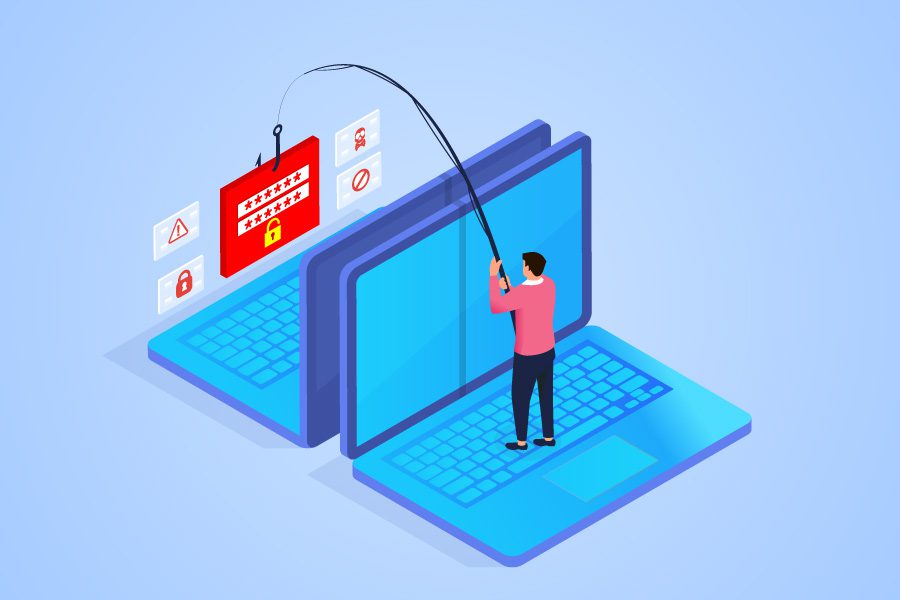Cybercrime is on the rise, and hackers are using any opportunity to take advantage of
an unknowing victim to gain access to personal information for financial gain. The new
‘work from anywhere world’ makes everyone at risk to cyber attacks, especially because
threats are harder to track over home networks. The blurred lines between home and
work create security nightmares if safety protocols are ignored, or don’t exist.
One commonly used tactic is phishing. Phishing messages are crafted to deliver a
sense of urgency or fear with the end goal of capturing a person’s sensitive data. If your
employees fall prey to phishing scams while working from home, it can affect your
company network by transferring malware and viruses over internet connections.
Here are five different types of phishing
attacks to avoid:
1. Spear Phishing
Attackers pass themselves off as someone the target
knows well or an organization that they’re familiar
with to gain access to compromising information
(e.g., credentials or financial information), which is used
to exploit the victim.
2. Whaling
Whaling is a form of spear phishing with a focus on a
high-value target, typically a senior employee within
an organization, to boost credibility. This approach also
targets other high-level employees within an organization
as the potential victims and includes an attempt to gain
access to company platforms or financial information.
3. Mass Campaigns
Mass phishing campaigns cast a wider net. Emails are
sent to the masses from a knock-off corporate entity
insisting a password needs to be updated or credit card
information is outdated.
4. Ambulance Chasing Phishing
Attackers use a current crisis to drive urgency for
victims to take action that will lead to compromising
data or information. For example, targets may receive
a fraudulent email encouraging them to donate
to relief funds for recent natural disasters or the
COVID-19 global pandemic.
According to Google, it has been reported that
cybercriminals have sent an estimated 18 million hoax
emails about COVID-19 to Gmail users every day.
5. Pretexting
Pretexting involves an attacker doing something via a
non-email channel (e.g., voicemail) to set an expectation
that they’ll be sending something seemingly legitimate
in the near future only to send an email that contains
malicious links.
What to do if you think you’ve received a
phishing email?
First, to help identify it as a phishing email, check to see
if the signed-by field was generated by a DomainKeys
Identified Mail (DKIM) or a service. DKIM is a good first
step in email authentication and is a technical solution
to prove that an email is not fake. For example, if you
received an email from name@technology.com, you
would see a DKIM in the signature that looks like this:
technology-com.20150623.gappssmtp.com. This is how all
emails through a domain are processed.
Emails shared through a service (e.g., Drive, Calendar,
Dropbox, Box, etc.) do not have a DKIM. Instead, you would
see the signature of the provided service
(i.e., signed-by dropbox.com).
If you receive a file, and it is not signed by google.com,
gmail.com, dropbox.com, it is likely phishing – delete it
immediately. It’s important to remain vigilant and proceed
with caution in these circumstances.

